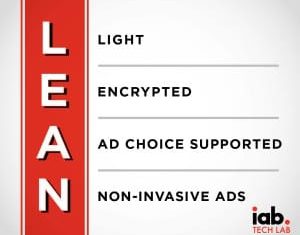
Decoding TAG malware scanning guidelines for tactical use
Note: View webinar at https://www.themediatrust.com/videos.php
The advertising industry’s crackdown on malvertising has begun. TAG’s recently-released malware scanning guidelines clearly state that every player in the digital advertising ecosystem has a role in deterring, detecting and removing malware.
However, these guidelines need to be translated into action plans. As with many cross-industry initiatives, the TAG guidelines serve several different groups across the digital ecosystem while also introducing security concepts to advertising/marketing professionals. The use of words such as: interdict, cloaking, checksum, and eval(), may baffle many ad ops professionals just like defining “creative” as a payload may baffle security teams.
The good news is that The Media Trust’s existing malware clients are already 100% compliant with the guidelines. Other ad ops teams at agencies, ad tech providers, and publishers, will need to translate the best practices into tactical actions in order to bring their operations into compliance.
What is clear: Scanning is in your future
Every entity that touches or contributes code to the serving of an ad plays a role in malware deterrence – this much is clear. Agencies, ad tech providers and publishers alike are, therefore, expected to proactively and repeatedly review their ads for malware.
Specifically, the guidelines state that:
- Ads and their associated landing pages must be scanned for malware
- Scanning should be performed before an ad is viewed by the end consumer
- If initial scanning detects malware, then the ad must be rescanned until malware-free
Read between the lines: Reap what you sow
The complexities of the digital ecosystem make it almost impossible to explicitly state what each player in the advertising ecosystem should do. Typically, the amount of scanning required is directly proportional to the risk of serving a malware-infected ad or directing to a malware-infected landing page. While there are some directional tips, the guidelines also present a few abstract recommendations:
- Scanning frequency
Ad formats, demand types, consumer reach and access to an ad as it traverses from advertiser to publisher, affect the frequency of recommended scanning.
For instance, a publisher with a campaign using hosted, static ads, targeting a small number of impressions does not have as robust a scanning requirement as a publisher running campaigns with rich media served programmatically. And, an ad contaminated by malware needs to be scanned more frequently than one that doesn’t set off alarm bells during the initial scan. And, an ad that changes mid-flight—modifying targeting, increasing number of impressions, introducing rich media—requires additional scanning.
- Proof of scanning
Claiming an ad is scanned is not sufficient. As a best practice, all parties should document proof of scanning and this proof should contain creative id, tag specifications, date of initial and subsequent scans and scanning results. In addition, each party in the advertising value chain should establish a point of contact for reporting malware and communicate it to their upstream and downstream partners.
- Know your partner
A critical factor that informs rescanning cadence is the provider’s confidence in their upstream partner(s). Long-standing relationships with reputable, responsive partner(s) infers a reduced likelihood of malicious activity, as opposed to a newly-formed partnership with a one-man shop based in a foreign country. And, the provider should also track and document if their partner adheres to the scanning guidelines, too.
Look ahead: This is just the beginning
The guidelines clearly set the stage for optimizing ad quality and its resulting effect on the user experience, with an emphasis on security. A 100% malware-free advertising experience can’t be guaranteed, but everyone agrees it can be greatly improved. Future steps will undoubtedly address data privacy, ad behavior and more.
While these guidelines provide the impetus to tackle malvertising, it’s a safe bet that industry leaders will push to make them standard a la TAG Certified Against Fraud and Certified Against Piracy programs. And, in order to standardize, a certification and evaluation or audit process will be needed.
Stay tuned.



